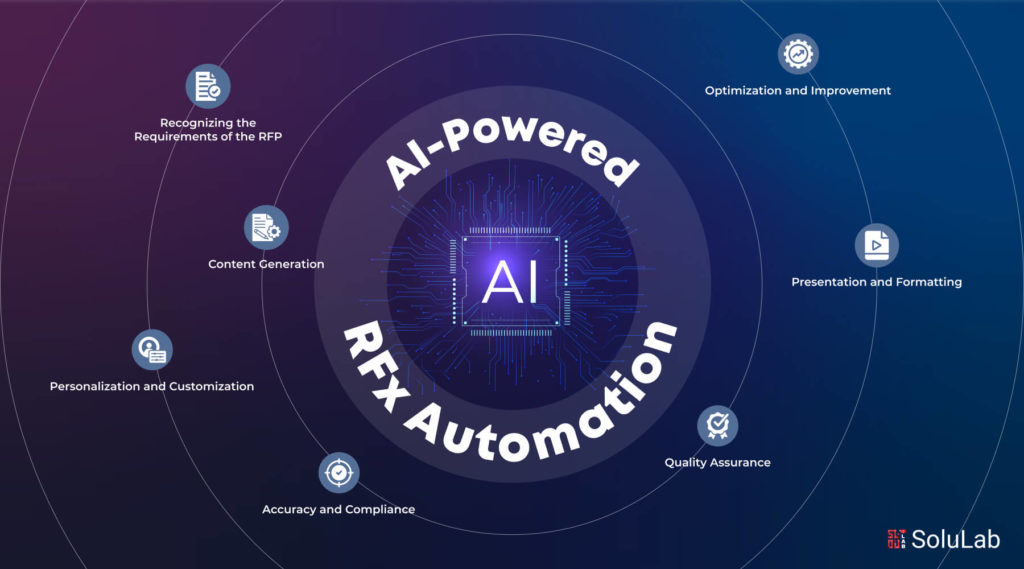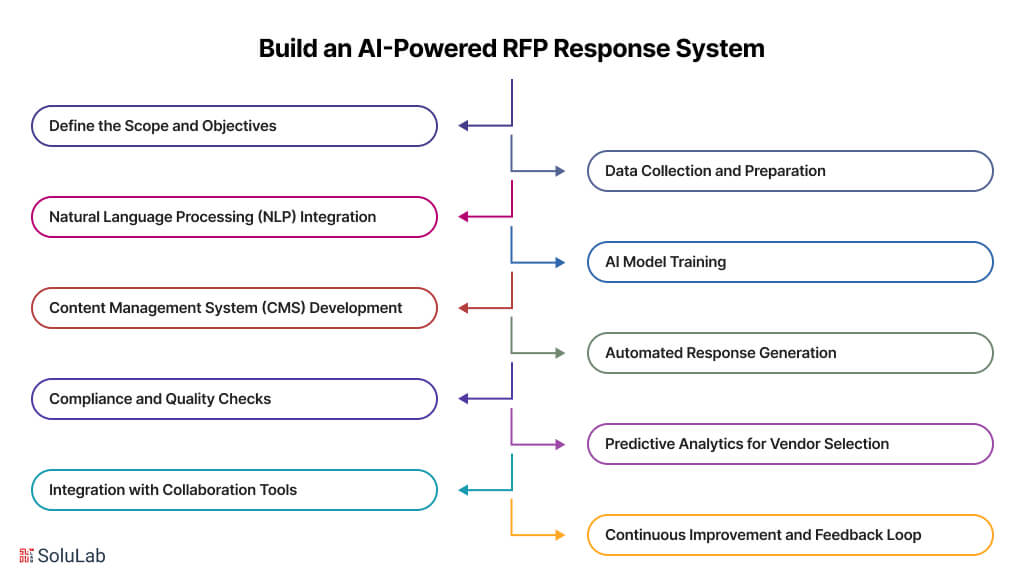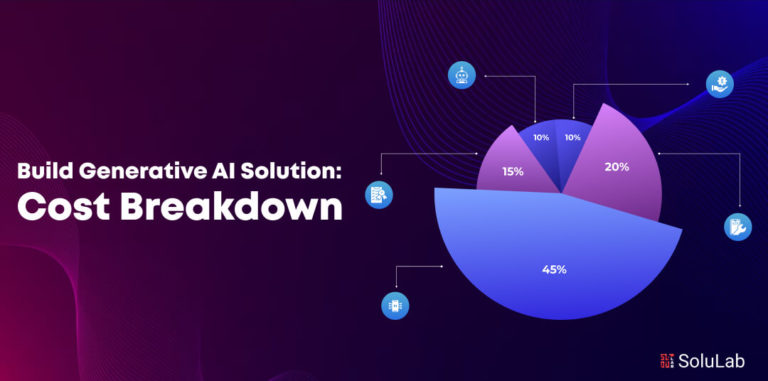
The core of any organization is procurement, which is in charge of managing supplies and supplier relationships. It entails acquiring the products and services—such as raw materials for manufacturing or daily services—that are required for a business to run. A company’s financial performance, sustainability, and competitiveness are all impacted by effective procurement processes. Businesses might experience significant gains in procurement when they use advanced analytics. For instance, Sanofi achieved an average 10% reduction in spend through should-cost modeling, and an advanced analytics platform reduced the time required to evaluate tenders by two-thirds. Furthermore, digitally enabled negotiations increased the savings achieved by 281%.
“Request for X,” or “RFx,” is a commonly used procurement phrase that encompasses a variety of vendor requests. For many forms of procurement papers, including Request for Proposal (RFP), Request for Quotation (RFQ), and Request for Information (RFI), the letter “X” acts as a stand-in. Transparent bidding, negotiations, vendor selection, and communication are made possible by these procedures. RFx makes sure companies get the most out of their investments while meeting compliance and quality standards.
Conventional RFx responses, however, have significant difficulties. Data input and analysis are two procedures that take time and increase the chance of bias and mistakes when done by hand. Procurement is transformed when AI into the RFx response is used, allowing teams to make data-driven, fast, and correct decisions. Businesses may save costs, reduce risks, and gain a competitive edge in today’s fast-paced market through increased productivity, strengthened supplier relationships, and strategic insights from AI-driven analytics.
In addition to discussing the basics of AI for RFx response, this blog will address the fundamentals of RFx response and how AI may expedite the process. It will also offer advice on how to create an AI-powered RFP response system.
What is RFx Response?
RFx refers to Request for X, where “X” can refer to a variety of items, including a proposal (RFP), a quote (RFQ), or information (RFI). These are the typical RFx responses utilized by business and procurement operations.
- Request for Proposal (RFP): This document is used when an organization wants to purchase a product or service and encourages eligible suppliers to submit offers that fit the buyer’s specified needs and criteria. The RFP describes the scope of work, requirements, assessment criteria, and other pertinent information.
- Request for Quote (RFQ): An RFQ is used by a buyer to obtain comparable prices or quotes from vendors for specific items or services. It is a formal request made to potential suppliers for price and other pertinent information.
- Request for Information (RFI): It is used when a buyer wants to learn more about a product, service, or provider but does not intend to make a purchase right away. It is frequently used in the early stages of procurement to analyze market capabilities, investigate available possibilities, or collect data for future decision-making.
These RFx documents are critical in procurement procedures because they assist buyers in acquiring information, analyzing possibilities, and making educated decisions when selecting suppliers or providers. They also give suppliers clear guidance on what is expected and how their offers will be assessed.
Traditional RFx Responses Structure Used by Industries
The structure presented below is a classic and widely used style for RFx responses, particularly Requests for Proposals (RFPs). It has the following sections:
Here’s an overview of how RFx responses are commonly structured:
1. Cover Letter/Introduction: The response frequently starts with a cover letter or introduction in which the supplier introduces themselves, shows interest in the offer, and emphasizes significant aspects of their organization.
2. Compliance Matrix: It is typical for suppliers to include a compliance matrix in their RFP responses, which matches the RFP criteria with the respective sections or pages of their response. This assures comprehensive covering of all needs and makes evaluation easy for the customer.
3. Executive Summary: This part summarizes the supplier’s proposal, emphasizing important features, advantages, and reasons why the customer should select their solution.
4. Detailed Answer: Following the executive summary, the response often includes thorough information addressing each need or question mentioned in the RFx document. Suppliers utilize this opportunity to provide information about their products/services, their strategy for addressing the buyer’s needs, planned implementation plans, price frameworks, and any other relevant details.
5. Technical Specs: In RFPs and RFQs, suppliers may give technical specifications, product details, or service descriptions to illustrate how their offering fulfills the buyer’s needs.
6. Pricing: It is an important consideration when responding to an RFQ. Suppliers give specific price information, such as unit costs, volume discounts (where available), terms and conditions, and any additional fees.
7. References and Case Studies: Suppliers may add references, testimonials, or case studies to illustrate their success and trustworthiness in providing related products or services to previous clients.
Finally, the response may involve the proposed agreement’s terms and conditions, such as terms of payment, warranties, service level agreements (SLAs), and other contract specifics. This traditional style is intended to give a clear and thorough summary of the supplier’s proposal, covering all parts of the RFx criteria and making it easy for buyers to assess the responses.
How Does AI-powered RFx Response Work?
Artificial intelligence (AI) transforms the RFx response process by fusing advanced analytics, machine learning, and natural language processing to improve submission accuracy, streamline document creation, and boost overall productivity. AI allows for quicker, more accurate solutions suited to the individual requirements of each RFx by leveraging powerful Large Language Models (LLMs) and integrating them with organizational statistics.
The AI-powered RFx response system’s architecture combines several parts and functions as follows:
1. Sources of Data: Diverse and comprehensive data inputs are necessary for effective RFx response techniques, such as:
- Historical Response Data: Documents pertaining to previous RFx replies that aid in identifying effective tactics and often-needed details.
- Data From Competitor Submissions: Through publicly granted contracts and industry benchmarks, competitors’ pricing and strategy are revealed.
- Details About the Client: Comprehensive customer information, including past exchanges, project histories, and particular requirements or preferences indicated in the current RFx document
- Information on Regulations and Compliance: Information on pertinent industry rules and requirements for compliance that need to be included in the answers.
- Project Details: Particulars from the RFx papers, including timetables, technical specifications, selection criteria, and scope.
2. Data Pipelines: The data from these many sources undergoes processing using complex data pipelines that manage ingestion, cleansing, and structuring, prepping it for further analysis.
3. Embedding Model: An embedding model processes the prepared data. This approach converts textual input into numerical representations termed vectors, which AI models can interpret. OpenAI, Google, and Cohere have all developed notable embedding models.
4. Vector Database: The created vectors are kept in a vector database, including Pinecone, Weaviate, or PGvector, which allows for efficient and speedy searching.
5. APIs and Plugins: APIs and plugins including Serp, Zapier, and Wolfram play a crucial role in linking different components and providing new functionality, such as obtaining more data, connecting with external tools or platforms, or completing specific activities.
6. Query Execution: It starts when the user sends a query to the RFx response app. These inquiries may be connected to particular RFx requirements, strategic guidance, or document preparation.
7. LLM Processing: After receiving the query, the app sends it to the orchestration layer. This layer gathers pertinent information from the vector database and LLM cache and routes it to the appropriate LLM for processing. The nature of the question determines which LLM to use.
8. Output: The LLM produces an output based on the query and data it receives. This output can take several forms, including proposed compliance checks and strategic suggestions based on the RFx specifications.
9. RFx Response App: This specialized software helps proposal teams effectively modify and finish proposals by providing AI-generated drafts and insights in an approachable way.
10. Feedback Loop: Another crucial component of this design is user input on the result of the LLM. User feedback is included in the system to constantly enhance the relevancy and accuracy of the LLM’s results.
11. Agent: AI agents enter this phase to tackle challenging issues, engage with the outside world, and improve learning via experiences after deployment. They accomplish this by using strategic tool use, complex reasoning/planning, memory, recursion, and self-reflection.
12. LLM Cache: To speed up the AI system’s reaction time, frequently used data is cached using programs like Redis, SQLite, or GPTCache.
13. Logging/LLMOps: LLM operations (LLMOps) tools such as Weights & Biases, MLflow, Helicone, and Prompt Layer are used during the process to record activities and analyze performance. This guarantees that the LLMs run at maximum effectiveness and evolve continuously via continuous feedback mechanisms.
14. Validation: A validation layer is used to ensure that the LLM output is correct. This is accomplished via technologies such as Guardrails, Guidance, Rebuff, and LMQL, which assure the quality and dependability of the information presented.
15. LLM APIs and Hosting: In order to host the application and carry out RFx response duties, LLM APIs and hosting platforms are necessary. Depending on the specifications, developers can use open-source models or LLM APIs from companies like Anthropic and OpenAI. In a similar vein, customers may select hosting platforms from cloud service providers such as Databricks, Mosaic, Anyscale, AWS, GCP, Azure, and Coreweave, or they can go with clouds with strong opinions. The requirements of the project and the preferences of the developers choose which cloud hosting platforms and LLM APIs to use.
This structured flow describes how AI uses powerful data analysis and technologies to expedite preparation, increase quality, and raise response rates of success in the RFx response process.
How Can AI Solve the Challenges Associated With RFx Response?
Responding to requests for proposals (RFPs), requests for quotes (RFQs), or requests for information (RFIs) can be intricate and time-consuming. Below are some common challenges in RFx responses and how AI-powered solutions can address them:
-
Deciphering and Comprehending RFP Questions
Challenge: RFP documents often contain numerous questions that touch on various aspects of a project or product. Accurately understanding the nuances and requirements of each question is crucial for crafting a compelling response.
AI-RFX Procurement Solution: Natural Language Processing (NLP) techniques can analyze RFP documents, extracting essential questions and requirements to provide a clearer understanding.
-
Recommending Pertinent Content From a Vast Content Library
Challenge: Organizations typically have extensive content repositories, including past proposals, case studies, white papers, and product information. Manually searching for relevant content segments can be labor-intensive and time-consuming.
AI-Powered RFx Management Solution: Artificial intelligence (AI)-powered content management systems can quickly suggest pertinent information from sizable collections, improving response effectiveness and consistency.
-
Rapidly Generating Initial Drafts of Proposal Responses
Challenge: Writing comprehensive and well-structured responses within tight deadlines can be challenging, especially for complex RFPs that require input from multiple stakeholders.
AI-RFX Procurement Solution: AI can generate initial drafts of proposals, providing a solid foundation for further refinement by human experts.
-
Customizing Content to Meet Specific RFP Requirements
Challenge: Each RFP is unique and may require tailored responses that address the issuing organization’s specific needs, goals, and preferences.
AI-Powered RFx Management Solution: AI tools can customize existing content to meet the unique requirements of each RFP, ensuring a personalized response.
-
Submitting Information Into Online Portals and Uploading Necessary Documents
Challenge: Responses to a lot of RFPs have to be sent via online portals or platforms, which frequently contain guidelines for formatting and document uploads.
AI-RFX Procurement Solution: AI automation simplifies the submission process by handling form filling, document uploads, and adherence to guidelines.
AI and analytics improve RFx processes by enhancing collaboration, establishing clear evaluation criteria, enabling data-driven decision-making, improving communication, and automating response evaluations.
AI Integration With the RFx Response
One of the most significant developments in the procurement process is the incorporation of AI into RFx response. Let’s see how AI-powered RFx management can be done in each stage of the RFP response procedure using the following example:
- Recognizing the Requirements of the RFP: AI systems are able to extract the RFP document’s essential requirements and criteria. Requirements can be ranked and categorized using machine learning models according to their significance and applicability to the project.
- Content Generation: By examining previous bids, related documents, and comparable RFPs, natural language processing (NLP) algorithms can help produce RFP responses. Artificial intelligence (AI)-driven content creation systems can provide pre-written templates, boilerplate text, and pertinent portions to add to the response.
- Personalization and Customization: AI algorithms have the ability to tailor the answer to the unique requirements, interests, and priorities of the customer. NLG technology may produce customized information based on the sections and specifications of the RFP.
- Accuracy and Compliance: AI-powered compliance monitoring systems can guarantee that the answer complies with all the rules, specifications, and recommendations included in the request for proposals. In order to guarantee correctness and completeness, machine learning models can identify any inconsistencies, mistakes, or missing information in the response.
- Optimization and Improvement: To pinpoint areas that need work, AI analytics systems can examine historical RFP replies, performance indicators, and feedback data. In order to facilitate ongoing optimization and improvement, natural language understanding (NLU) algorithms can recognize patterns, trends, and best practices in effective RFP responses.
- Presentation and Formatting: Consistency, integrity, and aesthetic appeal in the RFP response’s presentation may be guaranteed using AI-powered document formatting technologies. To improve readability and engagement, executive summaries, introductions, and conclusion parts can be produced using natural language generation algorithms.
- Quality Assurance: Grammar, spelling, and style consistency may be automatically checked for throughout the answer using AI-driven quality assurance algorithms. To find possible areas for development, problems with clarity, or ways to boost persuasiveness, machine learning algorithms can mimic human reviewers.
AI response process integration can increase response quality overall, increase accuracy, and simplify procedures. By utilizing AI-powered RFx, organizations may boost output, cut down on manual labor, and provide more persuasive and competitive RFP responses.
Applications of AI in RFx
Responding to requests for proposals (RFPs), requests for quotes (RFQs), or requests for information (RFIs) can be intricate and time-consuming. Here are some of the applications of AI in RFx processes:
- Automated Proposal Evaluation: AI can review and assess RFP submissions. Natural Language Processing (NLP) algorithms quickly examine documents, extract crucial information, and verify compliance with specified requirements.
- Customized RFP Response Generation: AI-driven systems can create tailored RFPs using historical data and project requirements. These systems streamline the RFP creation process by suggesting pertinent sections, requirements, and evaluation criteria.
- Predictive Analytics for Vendor Selection: AI algorithms can evaluate vendor data, historical performance, and other relevant factors to predict which vendors are most likely to meet the buyer’s needs. This assists in shortlisting vendors and making informed decisions during the vendor selection process.
- Chatbot Assistance for RFP Queries: AI-powered chatbots can support buyers and vendors by answering common questions related to the RFP process, submission guidelines, deadlines, and requirements. This boosts efficiency and minimizes the need for manual intervention.
- Risk Assessment and Mitigation: AI can evaluate potential risks associated with vendors, such as financial stability, compliance issues, or performance history. This helps buyers make informed decisions and mitigate risks during the vendor selection process.
- Optimized Proposal Content: AI algorithms can analyze successful past proposals and identify patterns or strategies that led to acceptance. This data can be used to enhance the content and structure of future proposals, increasing the likelihood of success.
- Dynamic Pricing Optimization: AI can analyze market trends, competitor pricing, and other relevant factors to optimize pricing strategies in RFP responses. This ensures that vendors remain competitive while maximizing profitability.
- Automated Compliance Checks: AI can automatically verify RFP submissions for compliance with formatting guidelines, legal requirements, and other specifications. This reduces the time and effort required for manual compliance checks and ensures submission consistency.
- Natural Language Generation for Proposal Summaries: AI-powered natural language generation systems can automatically create executive summaries or proposal highlights based on the content of submitted proposals. This provides a quick overview for decision-makers, enabling faster evaluation and comparison of proposals.
- Automated Follow-up Communications: During the RFx process, follow-up conversations with suppliers are automated by AI-driven technologies. AI ensures timely responses and maintains engagement by sending reminders, clarifications, and status updates via email, chatbots, or messaging platforms. This automated communication streamlines workflow reduces manual effort, and enhances transparency, fostering efficient collaboration between procurement teams and suppliers.
RFQ
- Automated Supplier Identification: AI algorithms can analyze historical data, market trends, and vendor performance metrics to identify and recommend suitable suppliers for a given RFQ. This helps streamline the supplier selection process and ensures that only qualified vendors are contacted.
- Dynamic Pricing Analysis: AI can evaluate pricing data from various sources, including historical quotes, market trends, and competitor pricing, to provide insights into optimal pricing strategies for RFQ submissions. This helps vendors remain competitive while maximizing profitability.
- Natural Language Processing (NLP) for Quote Analysis: AI-powered NLP algorithms can extract key information from RFQ documents and vendor quotes, such as pricing details, terms, and conditions. This facilitates quicker comparison and evaluation of quotes by buyers.
- Supplier Performance Prediction: AI can analyze historical data on supplier performance, including delivery times, quality of products/services, and customer satisfaction ratings, to predict the likelihood of each supplier meeting the buyer’s requirements. This allows buyers to make informed decisions when selecting suppliers for RFQs.
- Automated Quote Comparison: AI systems have the ability to automatically compare offers from several vendors according to pre-established standards like cost, timeliness, and quality. This streamlines the quote evaluation process and helps buyers identify the most cost-effective options.
- Optimized RFQ Generation: AI-powered systems can generate optimized RFQs based on historical data, past requirements, and specific project needs. This expedites the process of creating an RFQ by recommending pertinent parts, specifications, and assessment standards.
RFI
- Natural Language Processing (NLP) for Document Analysis: AI-powered NLP algorithms can analyze large volumes of RFI documents, extracting key information such as product specifications, service offerings, and supplier capabilities. This helps buyers quickly identify relevant information and make informed decisions.
- Automated Supplier Research: AI can analyze data from various sources, including company websites, industry reports, and social media, to identify and evaluate potential suppliers that match the buyer’s requirements. This guarantees that buyers may obtain full information and expedites the supplier discovery process.
- Predictive Analytics for Market Analysis: AI algorithms can analyze market trends, customer preferences, and competitor strategies to provide insights into market dynamics and potential opportunities. This supports purchasers in their strategic decision-making as they use RFIs to investigate the possibilities available.
- Chatbot Assistance for RFI Queries: AI-powered chatbots can help buyers navigate the RFI process by answering common questions, providing guidance on submission guidelines, and offering insights into relevant market trends. This increases productivity and elevates the user experience in general.
- Supplier Capability Assessment: AI can analyze data from various sources, such as supplier websites, case studies, and customer reviews, to evaluate the capabilities and strengths of potential suppliers. This helps buyers assess the suitability of suppliers for their specific requirements.
- Personalized Recommendations: AI algorithms can analyze buyer preferences, past interactions, and industry trends to provide personalized recommendations for potential suppliers or solutions. This helps buyers identify options that best meet their needs and preferences.
- Automated Response Evaluation: AI-powered systems can analyze responses to RFIs, comparing them against predefined criteria and benchmarks to identify strengths, weaknesses, and areas for further investigation. This aids purchasers in evaluating possible providers and solutions in an impartial manner.
- Continuous Improvement Through Feedback Analysis: AI can analyze feedback from past RFI processes to identify areas for improvement in future RFIs. By examining feedback from both buyers and suppliers, AI can help refine the RFI process, making it more effective and efficient over time.
- Personalized RFx Document Layouts: AI utilizes data analytics and natural language processing to generate documents with personalized layouts, optimizing readability and engagement. By analyzing past successful documents, market trends, and audience preferences, AI algorithms tailor visual elements such as charts, graphs, and infographics to convey complex information effectively. This personalized approach enhances comprehension and increases stakeholder engagement, ultimately improving the effectiveness of the AI in RFx process.
How to Build an AI-Powered RFP Response System?

Creating an AI-powered RFP response system involves several key steps. This process integrates various AI technologies to streamline and enhance the efficiency of managing RFPs. Here’s a guide to building an effective AI-powered RFx management system:
1. Define the Scope and Objectives
Start by identifying the specific goals you want to achieve with your AI-powered RFP response system. Determine the challenges you aim to address, such as reducing response time, improving accuracy, or increasing win rates. Clear objectives will guide the development process and ensure that the system meets your organization’s needs.
2. Data Collection and Preparation
Gather a comprehensive dataset of past RFPs, RFQs, and RFIs, along with corresponding responses, successful proposals, and other relevant documents. To train successful AI models, you need high-quality data, therefore make sure this data is clean and well-organized. To ensure confidentiality and abide by data privacy laws, anonymize sensitive information.
3. Natural Language Processing (NLP) Integration
To help the system comprehend and handle RFP materials, apply natural language processing (NLP) approaches. NLP algorithms can extract key information, such as project requirements, deadlines, and evaluation criteria, from the RFP documents. This allows the system to generate relevant and accurate responses.
4. AI Model Training
Train AI models using historical RFP data. Utilize machine learning techniques to find trends and insights in bids that are successful. These models can learn to predict the best responses and recommend content based on past performance. Regularly update and retrain the models to improve accuracy and adapt to changing requirements.
5. Content Management System (CMS) Development
Develop a robust content management system that stores all relevant documents, such as past proposals, case studies, and product information. Integrate AI-powered search capabilities to quickly retrieve relevant content segments. This ensures that the system can efficiently generate tailored responses based on the vast repository of information.
6. Automated Response Generation
Use AI algorithms to create proposal response first drafts quickly. Use template-based approaches combined with AI-driven customization to ensure that responses are tailored to specific RFP requirements. This speeds up the response process and provides a solid foundation for further refinement by human experts.
7. Compliance and Quality Checks
Incorporate automated compliance checks to ensure that responses adhere to formatting guidelines, legal requirements, and other specifications. Use AI to review responses for consistency, accuracy, and completeness. This reduces the time and effort required for manual compliance checks and ensures high-quality submissions.
8. Predictive Analytics for Vendor Selection
Leverage predictive analytics to enhance vendor selection processes. AI algorithms can analyze vendor performance data, market trends, and other relevant factors to predict which vendors are most likely to meet the buyer’s needs. This helps in making data-driven decisions and improves the chances of success.
9. Integration with Collaboration Tools
Integrate the AI-powered RFP response system with existing collaboration tools used by your team. This facilitates seamless communication and collaboration among team members, ensuring that inputs from various stakeholders are efficiently incorporated into the response process.
10. Continuous Improvement and Feedback Loop
Establish a feedback loop to continuously improve the AI-powered RFP response system. Collect feedback from users to identify areas for enhancement and update the system accordingly. Analyze the performance of submitted proposals to refine AI models and improve future responses.
By following these steps, you can build a comprehensive and effective AI-powered RFx Management system that streamlines the RFP response process, enhances accuracy, and increases your organization’s competitive edge.
The Bottom Line
In conclusion, the automation of procurement through AI-powered RFx Management revolutionizes how organizations handle RFPs, RFQs, and RFIs. By leveraging advanced AI technologies, businesses can streamline their response processes, enhance accuracy, and make data-driven decisions with unprecedented efficiency. From automated proposal generation and compliance checks to predictive analytics for vendor selection, AI significantly reduces the time and effort required for procurement activities. This transformation not only boosts productivity but also increases the likelihood of winning bids, thereby giving organizations a competitive edge in the marketplace.
However, implementing an AI-RFx procurement system comes with its own set of challenges, such as data quality issues, integration with existing systems, and the need for continuous model updates. This is where SoluLab, as a leading AI development company, can make a difference. SoluLab offers comprehensive solutions to address these challenges, ensuring seamless integration, high-quality data management, and regular model training to keep your AI system up-to-date. With a team of experts in AI and procurement processes, SoluLab provides tailored solutions that meet your specific needs. Ready to transform your procurement process? Contact us today to learn how we can help you harness the power of AI for AI-powered RFx management.
FAQs
1. What is AI-powered RFx management?
AI-powered RFx management involves using artificial intelligence to streamline and automate the processes of handling requests for proposals (RFPs), requests for quotes (RFQs), and requests for information (RFIs). It enhances efficiency by automating tasks such as document analysis, response generation, and vendor selection.
2. How does AI improve the procurement process?
AI improves the procurement process by automating repetitive tasks, analyzing large datasets for better decision-making, and ensuring compliance with requirements. This reduces the time and effort involved, improves accuracy, and increases the likelihood of successful bids.
3. What are the main challenges in implementing AI-powered RFx management?
Challenges include data quality issues, integration with existing systems, and the need for continuous model updates. Ensuring that AI systems are trained on accurate and relevant data is crucial for their effectiveness.
4. How can SoluLab help with AI-powered RFx management?
SoluLab provides end-to-end AI solutions tailored to your procurement needs. Our services include seamless integration, high-quality data management, and regular model updates, ensuring your AI system remains effective and up-to-date.
5. How can I get started with AI-powered procurement?
To get started, you can reach out to an AI Consulting company like SoluLab. Our team of experts will work with you to understand your needs, develop a customized solution, and implement it seamlessly into your procurement process.






